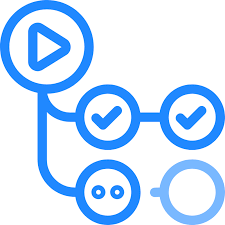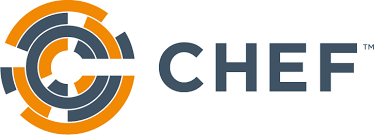Getting software out the door shouldn’t feel like a full-on obstacle course. Yet, anyone who’s been in DevOps knows how easy it is for releases to get tangled up in configuration files, approvals, and last-minute fixes. That’s where release tools step in. They’re the unsung heroes that help teams push code safely, automate repetitive steps, and actually sleep at night. In this article, we’ll break down the release tools that developers and DevOps pros are leaning on to keep their pipelines flowing – and their sanity intact.

1. AppFirst
Teams manage their release process with AppFirst to reduce the friction between writing code and getting it running in the cloud. Instead of juggling Terraform, YAML, or CDK configurations, they define what their app needs – CPU, database, networking, Docker image – and AppFirst handles the infrastructure setup automatically. This allows them to focus on shipping features rather than troubleshooting deployment pipelines or cloud-specific quirks. Over time, AppFirst helps maintain consistency across AWS, Azure, and GCP while keeping cost and audit visibility straightforward.
Using AppFirst also ensures that security and compliance checks are built into the deployment process. Teams do not need to wait for an infrastructure team or manually review every PR for infrastructure changes. Logging, monitoring, and alerting are included out of the box, saving time and reducing the overhead of maintaining separate tools. The setup supports both SaaS and self-hosted deployments, providing flexibility depending on the project or environment.
Wichtigste Highlights:
- Automatic provisioning of cloud infrastructure
- Built-in logging, monitoring, and alerting
- Centralized auditing of infrastructure changes
- Works across AWS, Azure, and GCP
- Supports SaaS and self-hosted deployment options
- Cost visibility by app and environment
Für wen es am besten geeignet ist:
- Teams that want to focus on building apps, not infrastructure
- Developers working across multiple cloud providers
- Companies standardizing security and compliance practices
- Organizations without a dedicated infrastructure or DevOps team
- Teams looking to streamline release and deployment workflows
Kontaktinformationen:
- Website: www.appfirst.dev
2. Jenkins
Jenkins is used to automate build, test, and deployment processes across projects. It acts as a flexible automation server that can be set up quickly on multiple operating systems and configured through a web interface. Jenkins handles continuous integration and continuous delivery, coordinating builds, running tests, and deploying applications without relying on multiple manual scripts. Its plugin system integrates with a variety of tools in the DevOps pipeline, allowing workflows to adapt instead of forcing teams into a fixed process.
Jenkins also enables distribution of work across multiple machines, speeding up testing and deployment tasks that could otherwise create bottlenecks. Its functionality can be extended with plugins and community-supported add-ons, so the system evolves alongside projects. By automating repetitive steps and distributing workloads, Jenkins helps teams focus on development rather than infrastructure management or manual tasks.
Wichtigste Highlights:
- Open-source automation server for CI/CD
- Supports hundreds of plugins for integration and extensions
- Easy installation on Windows, Linux, macOS, and Unix-like systems
- Web-based configuration with real-time error checking
- Ability to distribute work across multiple machines
- Extensible through plugins and community contributions
Für wen es am besten geeignet ist:
- Teams looking for a flexible CI/CD automation tool
- Developers needing to integrate multiple tools in a workflow
- Projects requiring distributed builds and parallel testing
- Organizations willing to maintain and configure an open-source server
- Teams that want an extensible platform adaptable to evolving needs
Kontaktinformationen:
- Website: www.jenkins.io
- Twitter: x.com/jenkinsci
- LinkedIn: www.linkedin.com/company/jenkins-project

3. GitHub Actions
GitHub Actions is used to automate workflows directly from a repository, connecting build, test, and deployment steps in one place. It allows teams to trigger workflows on any GitHub event, from code pushes to pull requests, and run jobs across Linux, macOS, Windows, and container environments. Matrix builds make it possible to test across multiple operating systems and runtime versions simultaneously, helping teams catch issues earlier without manual setup. The platform integrates with packages, APIs, and other tools to streamline processes that would otherwise require separate scripts or platforms.
Workflows in GitHub Actions can be written in YAML and stored in the repository, making them version-controlled and transparent. Teams can use built-in runners or host their own, giving flexibility in execution. Multi-container testing and the ability to interact with GitHub APIs or external services allow teams to automate complex deployment and integration scenarios. Real-time logs make it easier to diagnose failures quickly and coordinate tasks efficiently across a development team.
Wichtigste Highlights:
- Automates workflows directly from GitHub repositories
- Supports multiple operating systems and container environments
- Matrix builds for parallel testing across OS and runtime versions
- Version-controlled workflows in YAML format
- Integration with GitHub Packages, APIs, and external tools
- Real-time logging and workflow monitoring
Für wen es am besten geeignet ist:
- Teams that manage code primarily on GitHub
- Developers needing integrated CI/CD pipelines
- Projects requiring multi-platform testing
- Teams wanting version-controlled, reproducible workflows
- Organizations that need flexible automation with hosted or self-hosted runners
Kontaktinformationen:
- Website: github.com/actions
- Twitter: x.com/github
- LinkedIn: www.linkedin.com/company/github
- Instagram: www.instagram.com/github
4. GitLab CI/CD
GitLab CI/CD provides a framework to automate building, testing, and deploying applications within a single platform. Pipelines are defined in a .gitlab-ci.yml file, which specifies stages, jobs, and scripts to run. Jobs can be triggered by various events such as commits, merges, or schedules, and run on runners that can be either shared, self-hosted, or specific to a project. This setup allows teams to structure pipelines in a consistent and reproducible way while keeping the configuration version-controlled alongside the code.
The platform also supports reusable components and CI/CD variables, making it easier to manage complex workflows and maintain consistency across projects. Runners can execute jobs in containers or virtual machines, providing flexibility in environments and languages. Matrix pipelines and dynamic expressions enable teams to handle multiple runtime versions or conditional tasks, reducing manual effort and helping detect issues earlier in the development cycle.
Wichtigste Highlights:
- Supports shared, self-hosted, or project-specific runners
- Reusable components and templates for consistent workflows
- CI/CD variables and expressions for dynamic configuration
- Supports containerized or VM-based job execution
- Triggers pipelines on commits, merges, or scheduled events
Für wen es am besten geeignet ist:
- Teams looking for integrated CI/CD within a single platform
- Developers managing multiple environments or runtime versions
- Projects requiring reproducible and version-controlled pipelines
- Organizations needing reusable components for consistent workflows
- Teams that want flexibility with runners and containerized execution
Kontaktinformationen:
- Website: gitlab.com
- Facebook: www.facebook.com/gitlab
- Twitter: x.com/gitlab
- LinkedIn: www.linkedin.com/company/gitlab-com

5. CircleCI
CircleCI offers a platform to automate the building, testing, and deployment of applications across different environments. Pipelines are defined in configuration files that specify jobs and workflows, allowing tasks to run on Linux, macOS, Windows, or containerized environments. The platform can trigger jobs based on code commits, merges, or schedules, and supports parallel execution to speed up pipelines. This setup provides teams with a way to structure development workflows and keep builds and tests consistent.
Workflows in CircleCI can integrate with other tools and services, and reusable configuration elements help maintain a clear and manageable pipeline structure. Jobs can be customized with caching, environment variables, and container images, allowing teams to handle dependencies and optimize build times. The platform also supports scaling through parallelism and resource allocation, which can help teams handle larger projects or multiple runtime versions without manual intervention.
Wichtigste Highlights:
- Pipelines defined in configuration files with jobs and workflows
- Supports Linux, macOS, Windows, and container-based environments
- Parallel execution and resource allocation for faster pipelines
- Reusable configuration elements for consistency
- Environment variables and caching to manage dependencies
- Integrates with other development and deployment tools
Für wen es am besten geeignet ist:
- Teams managing multi-platform projects
- Developers needing scalable and parallelized CI/CD pipelines
- Projects with complex dependencies or containerized workflows
- Teams looking for reusable and maintainable configuration setups
- Organizations integrating CI/CD into a wider toolchain
Kontaktinformationen:
- Website: circleci.com
- Twitter: x.com/circleci
- LinkedIn: www.linkedin.com/company/circleci
6. Octopus Deploy
Octopus Deploy focuses on automating the release and deployment of applications across different environments, including cloud, on-premises, and Kubernetes. Teams define deployment processes that can be reused across projects and environments, reducing repetitive work and helping maintain consistency. It supports both software and AI workloads, giving visibility into deployments with logs, manifests, and live status tracking. This approach allows teams to manage complex deployment pipelines without needing to maintain long, error-prone scripts.
The platform also provides tools for environment progression, tenanted deployments, and runbook automation, making it easier to handle multiple environments and customers at once. Integrations with existing CI tools like Jenkins, GitHub, and Azure DevOps let teams orchestrate their releases without disrupting established workflows. Security and compliance are handled through role-based access controls, audit logs, and ITSM integrations, helping teams scale their deployment processes while keeping governance in check.
Wichtigste Highlights:
- Automates deployment across cloud, on-premises, and Kubernetes
- Reusable deployment processes for multiple environments
- Live status tracking, logs, and manifests for deployed applications
- Environment progression and tenanted deployments
- Runbook automation to simplify repetitive tasks
- Integrates with existing CI/CD tools
- Security features including RBAC and audit logs
Für wen es am besten geeignet ist:
- Teams deploying to multiple environments or tenants
- Organizations managing complex or frequent releases
- Projects involving Kubernetes or cloud-native services
- Developers and ops teams needing consistent, repeatable deployments
- Companies needing visibility and governance in deployment workflows
Kontaktinformationen:
- Website: octopus.com
- E-mail: sales@octopus.com
- Twitter: x.com/OctopusDeploy
- LinkedIn: www.linkedin.com/company/octopus-deploy
- Address: Level 4, 199 Grey Street, South Brisbane, QLD 4101, Australia
- Phone: +1 512-823-0256

7. Jellyfish
Jellyfish provides a structured approach to release management by helping teams plan, schedule, and monitor software releases in a way that aligns development and operations. They focus on coordinating the various stages of the release cycle—from planning and development to testing, deployment, and monitoring—so teams can spot potential bottlenecks early and reduce the risk of disruptions. By visualizing workflows and tracking progress across these stages, teams can maintain continuity and ensure that releases move smoothly from idea to production.
The platform also emphasizes metrics and monitoring to guide improvements. By keeping track of indicators such as deployment frequency, lead time for changes, and failure rates, teams can identify where delays or errors are occurring and adjust processes accordingly. Automation is integrated into the pipeline to reduce manual interventions, making it easier to manage releases consistently and to verify that deployments meet functional and compliance requirements.
Wichtigste Highlights:
- Coordinates planning, development, testing, deployment, and monitoring stages
- Provides insights into workflow efficiency and bottlenecks
- Tracks release metrics to support continuous improvement
- Supports automation across the release pipeline
- Helps maintain data integrity and compliance during releases
- Offers visibility into both software releases and deployments
Für wen es am besten geeignet ist:
- Teams looking to improve coordination between development and operations
- Organizations managing multiple concurrent releases
- Engineering leaders who want actionable insights from release metrics
- DevOps teams aiming to automate and streamline release pipelines
- Companies focused on maintaining release quality and consistency
Kontaktinformationen:
- Website: jellyfish.co
- E-mail: hello@jellyfish.co
- Twitter: x.com/_jellyfish_co
- LinkedIn: www.linkedin.com/company/jellyfish-co
- Instagram: www.instagram.com/_jellyfish_co
- Address: 225 Franklin Street Suite 2000, Boston, MA 02110

8. Spacelift
Spacelift helps teams manage infrastructure as code by providing a workflow that coordinates planning, automation, and deployment across multiple environments. They focus on creating reproducible pipelines for infrastructure tasks, letting teams define dependencies, enforce policies, and maintain control over the release process. By integrating with tools like Terraform, Pulumi, and Kubernetes, Spacelift allows teams to manage complex infrastructure changes without manual intervention, while keeping a clear view of each step in the pipeline.
The platform also emphasizes collaboration and governance, giving teams the ability to set approval processes, track changes, and detect drift in infrastructure configurations. Automation combined with monitoring ensures that releases are predictable and errors are easier to catch early. Teams can create reusable workflows and self-service modules, enabling developers to focus on building features while keeping infrastructure consistent and auditable.
Wichtigste Highlights:
- Automates infrastructure provisioning and deployment
- Supports workflow dependencies and multi-environment pipelines
- Integrates with Terraform, Pulumi, Kubernetes, and other IaC tools
- Policy enforcement and approval workflows
- Drift detection and optional remediation
- Provides visibility and monitoring for infrastructure changes
Für wen es am besten geeignet ist:
- Teams managing infrastructure as code pipelines
- Organizations using multiple IaC tools and cloud platforms
- Developers needing self-service infrastructure capabilities
- DevOps teams aiming to automate deployments while maintaining governance
- Teams looking to reduce manual steps in infrastructure provisioning
Kontaktinformationen:
- Website: spacelift.io
- E-mail: info@spacelift.io
- Facebook: www.facebook.com/spaceliftio-103558488009736
- Twitter: x.com/spaceliftio
- LinkedIn: www.linkedin.com/company/spacelift-io
- Address: 541 Jefferson Ave. Suite 100 Redwood City CA 94063

9. Red Hat Ansible Automation Platform
Ansible helps teams automate software deployments and infrastructure management using simple, repeatable scripts called playbooks. They focus on reducing manual intervention while keeping deployments consistent across different environments. By defining the desired state of systems in code, teams can ensure that each release behaves predictably, whether it’s provisioning servers, configuring applications, or rolling out updates across multiple machines.
The platform also emphasizes collaboration and transparency, letting teams share playbooks and track changes over time. With built-in modules for common tasks and integrations with CI/CD tools, teams can build automated release pipelines that include testing, deployment, and monitoring. This approach helps maintain reliability while giving developers more confidence that releases will run as intended.
Wichtigste Highlights:
- Automates software deployment and infrastructure configuration
- Uses simple, human-readable playbooks
- Supports multi-environment and multi-node deployments
- Integrates with CI/CD pipelines and various cloud platforms
- Tracks changes and versioning for infrastructure
- Includes modules for common administrative and deployment tasks
Für wen es am besten geeignet ist:
- Teams managing complex deployments across multiple servers or environments
- Organizations using a mix of on-premises and cloud infrastructure
- Developers and operators looking for consistent, repeatable deployments
- DevOps teams aiming to reduce manual configuration and errors
- Teams wanting to integrate infrastructure automation with CI/CD pipelines
Kontaktinformationen:
- Website: www.redhat.com
- E-Mail: apac@redhat.com
- Facebook: www.facebook.com/RedHat
- Twitter: x.com/RedHat
- LinkedIn: www.linkedin.com/company/red-hat
- Address: 100 E. Davie Street Raleigh, NC 27601, USA
- Phone: 8887334281

10. Chef
Managing infrastructure and deployments can get messy fast – but Chef makes it a lot more manageable. The idea is simple: treat your system configurations like code. This way, you can create repeatable environments and apply changes consistently across servers or cloud instances. No more “well, it worked on my machine” surprises.
By defining the desired state in code, Chef helps reduce configuration drift and keeps releases predictable. It also includes workflow orchestration, compliance monitoring, and audit-ready reporting, so you’re not scrambling to figure out what changed where. And because it integrates with cloud providers and CI/CD pipelines, you can automate the whole process – from spinning up resources to deploying apps.
Wichtigste Highlights:
- Automates infrastructure and application configuration
- Uses code-driven workflows for consistency across environments
- Supports orchestration and scheduling of tasks
- Provides compliance monitoring and audit-ready reporting
- Integrates with cloud platforms and CI/CD pipelines
- Reduces configuration drift and manual errors
Für wen es am besten geeignet ist:
- Teams managing large-scale or complex infrastructure
- Organizations needing consistent environments across servers and clouds
- DevOps teams combining compliance and deployment automation
- Developers aiming for repeatable, version-controlled infrastructure changes
- Teams wanting to integrate orchestration with CI/CD pipelines
Kontaktinformationen:
- Website: www.chef.io
- Facebook: www.facebook.com/getchefdotcom
- Twitter: x.com/chef
- LinkedIn: www.linkedin.com/company/chef-software
- Instagram: www.instagram.com/chef_software
- Address: 15 Wayside Rd, Suite 400 Burlington, MA 01803
- Telefon: +1-781-280-4000
Schlussfolgerung
At the end of the day, there’s no single “perfect” release tool that works for every team. Each one has its own strengths – some make infrastructure automation a breeze, others help keep workflows organized, and a few integrate tightly with CI/CD pipelines. Most teams end up picking the tools that fit their existing processes, tech stack, and how much control they want over deployments. The real win comes from finding the right mix that makes releases more predictable, cuts down on mistakes, and gives your team more time to focus on building rather than firefighting.
Release management isn’t just about automating stuff – it’s about creating structure, keeping everyone on the same page, and making collaboration smoother. Pairing tools like Ansible or Chef with thoughtful processes means you can move faster without constantly stressing about what might break. Even small tweaks in how you plan, execute, and monitor releases can add up over time: fewer rollbacks, smoother launches, and better experiences for your users. It’s not about perfection; it’s about finding a rhythm that works, learning from each release, and slowly making the whole process more reliable and less painful.


